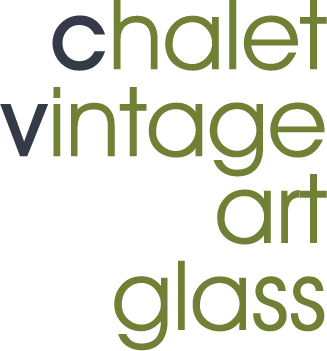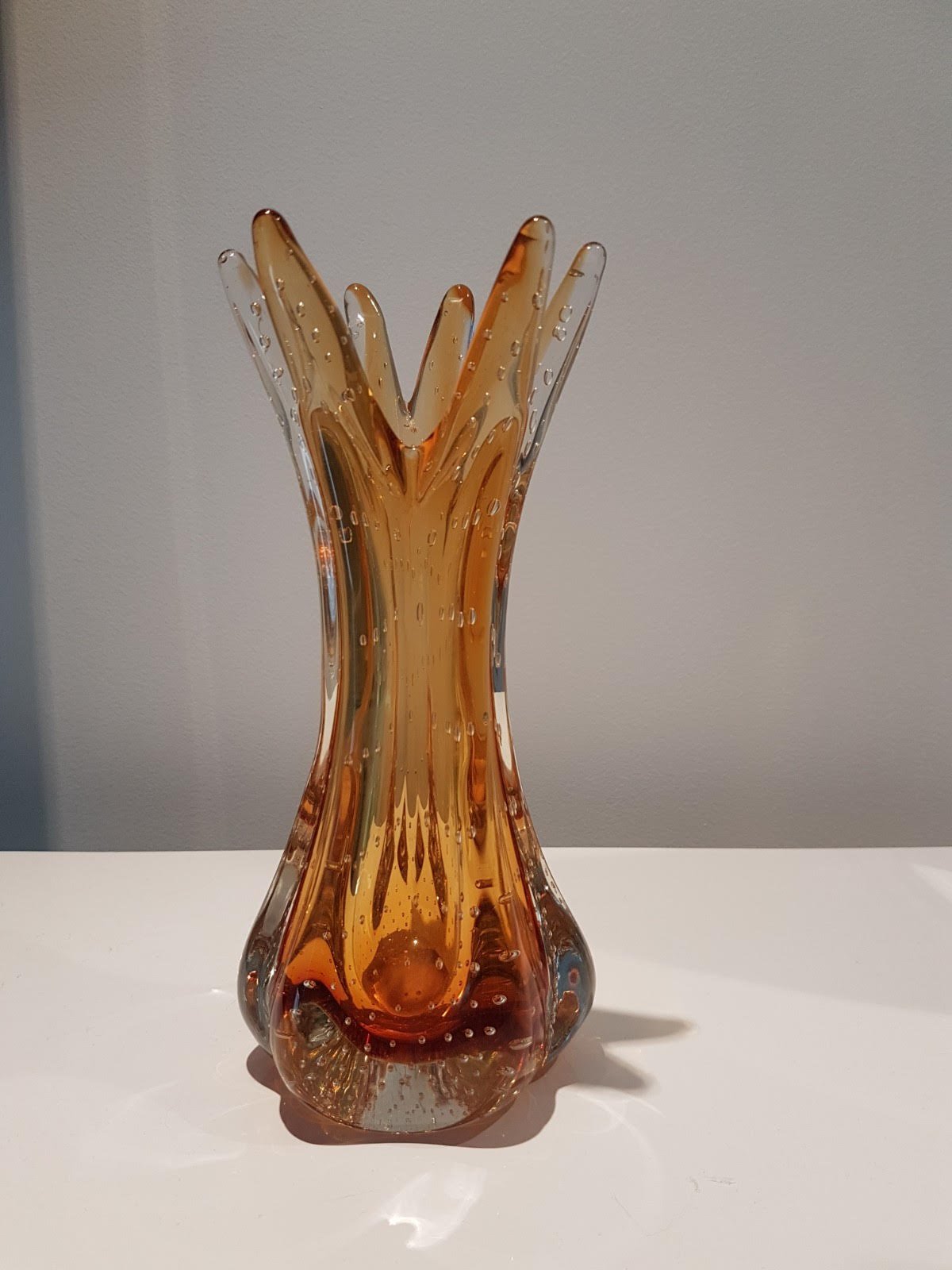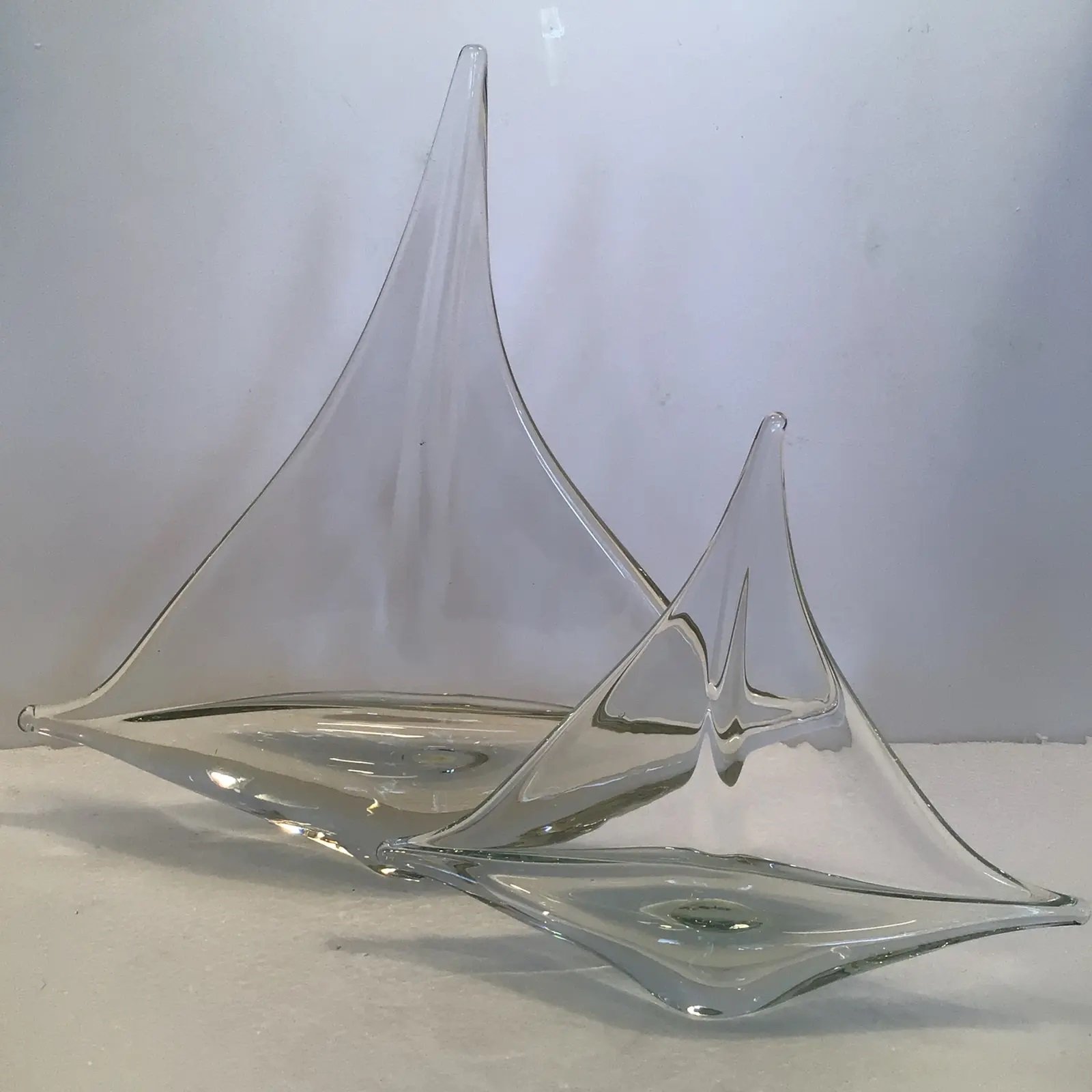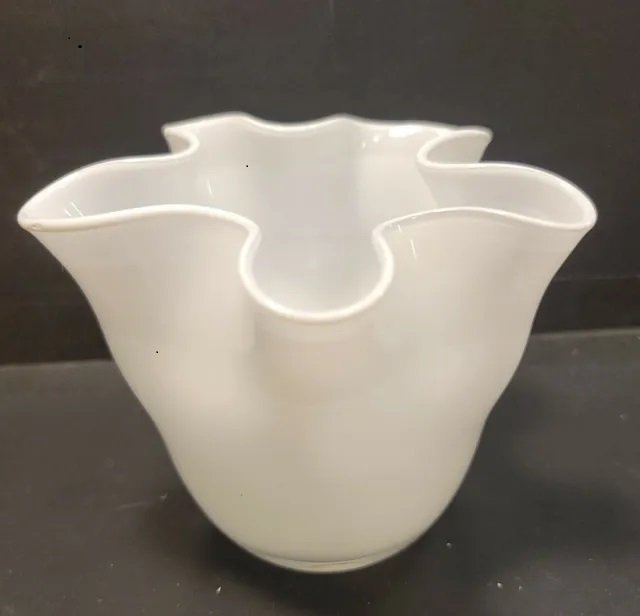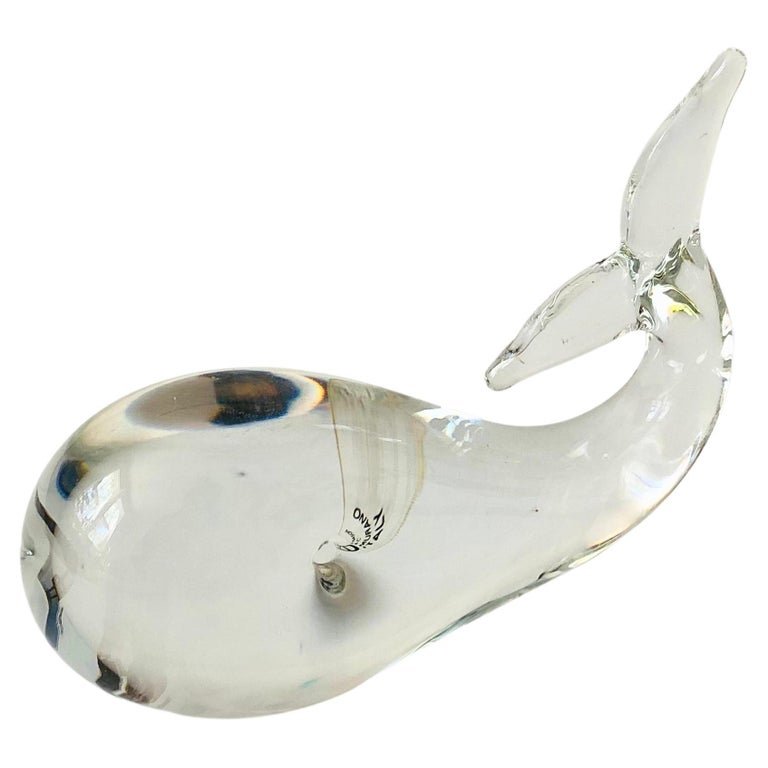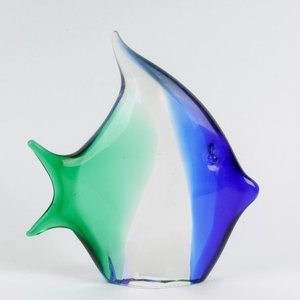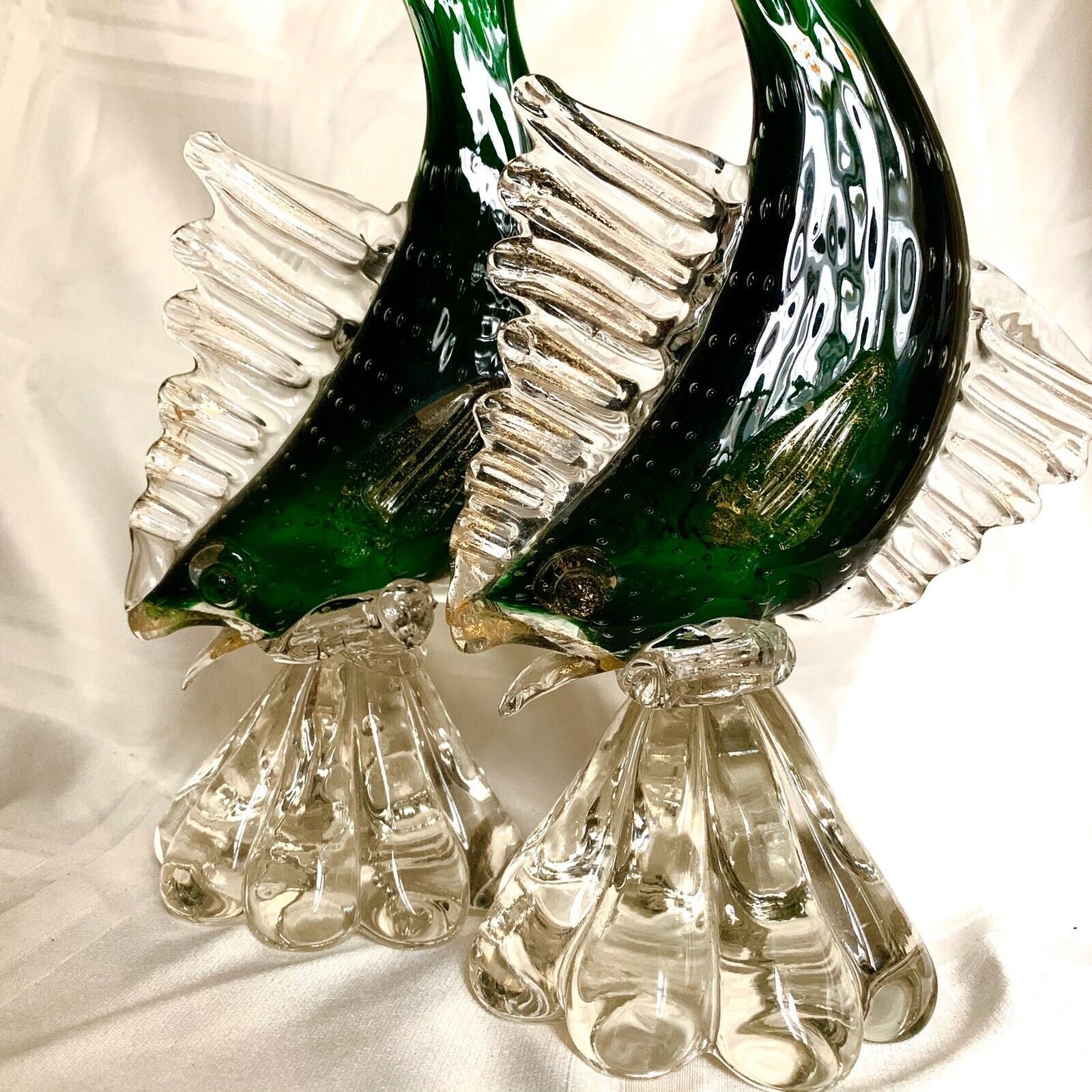From Murano to Cornwall
Since the title of this article does not make it instantly clear what its focus is, I will elaborate. I wanted to dig into how closely Chalet’s designs were tied to Murano influences and if those ties lasted throughout the company’s history. I began exploring this topic with the belief that the majority of Chalet’s designs/forms would be quite noticeably similar to Italian glass of the same era as it is undisputed, based on what we know of Chalet’s history, its ownership and the background of the artists who worked there, that Chalet’s roots were firmly planted in the islands of Murano. However, it also became increasingly obvious that it’s a long way from Murano to Cornwall. In fact, I found that noticeable differences in design and form were as frequent as fast similarities and that these could be found from start to finish. I found myself nodding agreement to the words of Angelo Tedesco, “We had to change Venetian design to a small, modern design. Less artistic but more useful. Artistic for Canadian homes.” From the film “Why Canada,” 1965.
An interesting side point that I feel needs to be emphasized is that, through looking at hundreds of photographs, it became very evident to me that many, many designs and forms by Lorraine Glass Industries showed much closer similarity to and influence by their Murano heritage. Lorraine’s vases and stretch centerpieces in particular show close design overlap. Take a look at the vases immediately below. Can you tell which is Murano and which is Lorraine? As well,Lorraine’s unmarked baskets, ashtrays and “fish” dishes are often mistaken for Murano pieces and vice versa. One last observation, Lorraine’s frequent use of the “star shaped” base is also a compelling case in this argument as this base is very common to Murano pieces while overall and to the contrary, I found that Chalet’s bases show very little commonality with Italian works of the same era.
A piece by Lorraine Glass Industries. From the collection of 50 Shades member Cindy Bishop-Loughlin.
Murano centerpiece.
I am going to touch only briefly on some few colour differences/similarities between Chalet and Murano pieces. There are both – and both are marked. The vast majority of Chalet forms, with the exception of the animal figurines, are solids – one colour. And without adornment and/or inclusions. The same cannot be said of Venetian pieces as there are so many combinations of colours and effects used. Chalet did adopt a few of the 2-tone colour combinations we commonly see in Murano pieces but I would like to point out a notable exception – amberina. We see many Murano pieces in this particular 2-tone but I know of only a very few amberina coloured Chalet. Interestingly, they all have been hand molded pieces from the Canadian Heritage Glass line.
Very rare Chalet amberina pieces.
This particular 2-tone colour palette, in my opinion, is the most common shared between Chalet and Murano:
Basket in background – Chalet Artistic Glass. Centerpiece in foreground – Murano.
Vase in background – Murano. Vase in foreground – Chalet Artistic Glass.
And I am going to be as brief regarding finishes, ornamentation, and effects. Chalet, for the most part, stayed true to a simpler design vision as per the words of Angelo Tedesco. They limited bullicante to their larger animal figurines and a very few test pieces in amber, the one forato piece (A40 shown in the early 1962 sales brochure was dropped from production, avventurina was also limited to animal figurines and the applied crystal stems and leaves of fruit, inclusions appear to be only found in the very rare paperweights and texturizing surface finishes such as a ghiaccio are found only on a very few glass fruit such as some apples, strawberries, lemons, limes and oranges. As well, the famous millefiori that is so common in Murano produced pieces was not adopted as a Chalet design standard. However, we have found a very few baskets with this effect that I assume were done as test pieces. I am showing one here from the collection of 50 Shades member Kevin Hall for interest’s sake. It should be noted that, to date, although bullicante Lorraine Glass pieces are quite common, we have found no verified Lorraine Glass Industries pieces using any of the other techniques, finishes or ornamentation as mentioned above. However, Lorraine did use applied eyes on their animal figurines.
Chalet Artistic Glass millefiori basket from the collection of Kevin Hall.
So, now that I have shown you some markedly different design trends and tendencies “From Murano to Cornwall,” let’s do a 360 and for fun, look at a few “shameless” Chalet appropriations! And then follow those with some Chalet pieces that reflect more “subtle” Murano design influences.
This one is my favourite!
For more details, please refer to the article, “From Concept to Catalogue.”
Chalet Artistic Glass apple ashtray/cigar bowl from the collection of 50 Shades member Daniel Lynch.
Barbini (Murano) apple ashtray/cigar bowl.
Barbini (Murano) apple and pear bookends.
Chalet Artistic Glass apple and pear book ends.
Clear crystal Chalet sailboats.
Clear crystal Murano sailboats.
Chalet.
Murano.
An iconic Murano form – the fazoletto (handkerchief) vase.
A Chalet version.
Murano.
Cornwall.
And now a few examples that show a more subtle design relationship – kissing cousins not twins.
Murano “Moby.”
Chalet “Cetacean.”
Etched “Chalet Canada.”
Murano. Flavio Poli for Seguso.
Archimede Seguso.
Both figurines, Chalet Artistic Canada.
Chalet.
Murano.
Murano sailfish.
Chalet sailfish.
Etched ”Chalet Canada” (P#45). From the collection of the Zhao family.
Murano.
Murano.
Etched “Chalet Canada.”
A trio from Chalet Artistic Glass.
Seguso (Murano) “horned vase.”
I get so much out of writing these articles – invaluable interaction with the community, increased knowledge, and the satisfaction of my curiosity. The last point is especially interesting when investigation actually disproves the notion or theory that I held when I first began my research.
